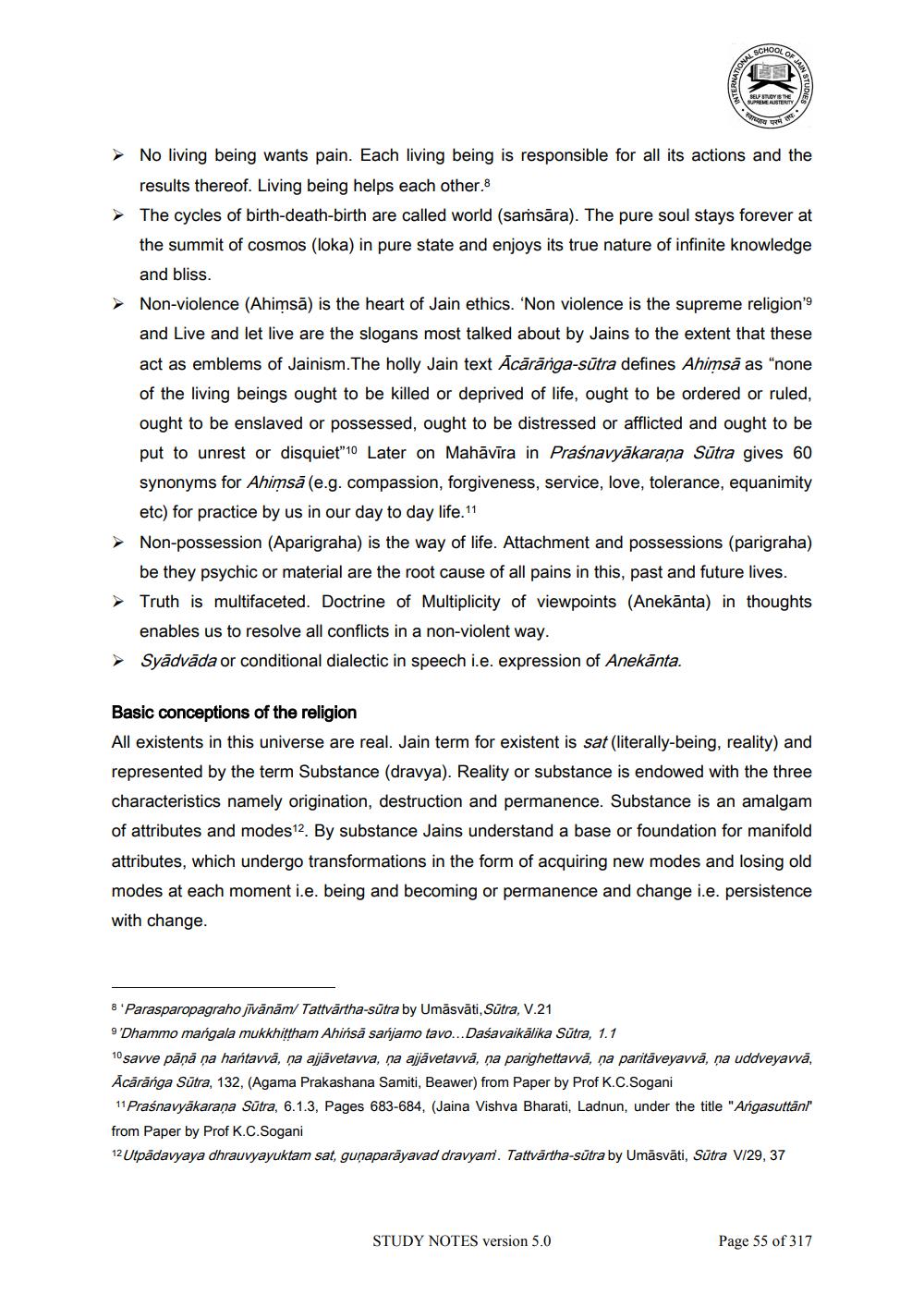________________
3
>
No living being wants pain. Each living being is responsible for all its actions and the results thereof. Living being helps each other. 8 The cycles of birth-death-birth are called world (saṁsāra). The pure soul stays forever at the summit of cosmos (loka) in pure state and enjoys its true nature of infinite knowledge and bliss. Non-violence (Ahimsā) is the heart of Jain ethics. "Non violence is the supreme religion'9 and Live and let live are the slogans most talked about by Jains to the extent that these act as emblems of Jainism. The holly Jain text Ācārānga-sūtra defines Ahimsā as “none of the living beings ought to be killed or deprived of life, ought to be ordered or ruled, ought to be enslaved or possessed, ought to be distressed or afflicted and ought to be put to unrest or disquiet'10 Later on Mahāvīra in Praśnavyākaraṇa Sūtra gives 60 synonyms for Ahimsā (e.g. compassion, forgiveness, service, love, tolerance, equanimity etc) for practice by us in our day to day life. 11 Non-possession (Aparigraha) is the way of life. Attachment and possessions (parigraha) be they psychic or material are the root cause of all pains in this, past and future lives. Truth is multifaceted. Doctrine of Multiplicity of viewpoints (Anekānta) in thoughts enables us to resolve all conflicts in a non-violent way. Syādvāda or conditional dialectic in speech i.e. expression of Anekānta.
►
Basic conceptions of the religion All existents in this universe are real. Jain term for existent is sat (literally-being, reality) and represented by the term Substance (dravya). Reality or substance is endowed with the three characteristics namely origination, destruction and permanence. Substance is an amalgam of attributes and modes 12. By substance Jains understand a base or foundation for manifold attributes, which undergo transformations in the form of acquiring new modes and losing old modes at each moment i.e. being and becoming or permanence and change i.e. persistence with change.
8 'Parasparopagraho jīvānām/ Tattvārtha-sūtra by Umāsvāti, Sūtra, V.21 9 Dhammo mangala mukkhittham Ahinsa sanjamo tavo... Daśavaikālika Sūtra, 1.1 10 savve pāņa na hantavvā, na ajjāvetavva, na ajjāvetavā, na parighettavā, na paritāveyavvā, ņa uddveyavā, Ācārānga Sūtra, 132, (Agama Prakashana Samiti, Beawer) from Paper by Prof K.C.Sogani 11 Praśnavyākarana Sūtra, 6.1.3, Pages 683-684, (Jaina Vishva Bharati, Ladnun, under the title "Angasuttan!" from Paper by Prof K.C.Sogani 12 Utpadavyaya dhrauvyayuktam sat, gunaparāyavad dravyam. Tattvārtha-sūtra by Umāsvāti, Sūtra V/29, 37
STUDY NOTES version 5.0
Page 55 of 317




